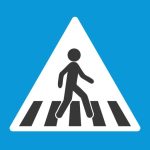Following the Addiction Treatment Trail in Boston

Matha Bebinger, the health editor for WBUR, Boston’s public radio station, recently followed a recovering addict through the city’s addiction treatment programs. People with substance use disorders typically show up first at the emergency room. Life-saving naloxone can immediately stop an overdose in its tracks, buying doctors a few hours to engage in a medical intervention.
A recent study working backwards from overdose deaths to missed opportunities for medical intervention found in over 70% of the cases physicians said they lacked the knowledge and/or training to intervene. It is a remarkable statement that a person can graduate from a medical school and complete a residency and still not have the knowledge and/or training to deal with a patient presenting with substance use disorder. In the WBUR profile, the patient was referred from the emergency room to a treatment clinic and started on Suboxone to lessen the withdrawal symptoms from opioid addiction.
Suboxone, or buprenorphine, has been a big part of the story in the recent decline in drug overdose deaths. The U.S. Congress passed legislation liberalizing laws on who may prescribe buprenorphine, leading to a vastly increased availability of both naloxone, to reverse overdose, and buprenorphine, to reduce the symptoms of withdrawal.
The next step on the WBUR recovery trail: How do you keep the recovering addict from relapsing? That’s the trillion dollar question, isn’t it? We know how to use medication to buy enough time to initiate a proven treatment program, but how do we get the recovering addict to stick to it? In the case of our Boston patient on the road to recovery, they lucked into a pilot contingency management program; they get paid for clean drug tests.
As we have reported here at AddictionNews many times, contingency management is the most effective way of getting recovering addicts to stay in recovery. The longer they stay in recovery, the better their chances of returning to a normal, productive life. Therefore, paying people is the most cost-effective way of treating substance use disorder, which is why it is approved almost nowhere in the United States.
The Veterans Administration (VA) pays for contingency management. Medicaid and Medicare do not. Most private insurance companies do not. California is conducting a statewide pilot program in contingency management. The knocks against contingency management are:
- You’re paying addicts to take drugs. No, just the opposite, you are paying them to prove they have not taken drugs.
- They trade the gift cards they receive for drugs. Again, quite the opposite: They do not get the gift cards unless they can prove they’re not using drugs.
- Clinics are paying addicts to become patients. Clinics should be encouraged to recruit addicts to enter treatment programs and rewarded if they keep patients in treatment programs.
Bebinger follows one recovering addict in Boston’s program. It took him a year on contingency management to achieve abstinence. He’s been on the program for another year now, and has used the reward money to buy kitchen appliances and start a garden. The clinic where he gets treatment supports a community reinforcement approach that addresses such issues as education, employment and healthcare.
Bebinger does not state whether patients are receiving some form of cognitive behavioral therapy (CBT). Studies have shown that relapse is likely without it. CBT helps patients set their own goals for recovery and provides them with cognitive tools to stay the course. They learn to avoid cues, resist urges, and respond to stress with healthy choices. Studies in Europe show that simple cognitive resistance training improves alcoholism recovery rates by 8-13% in the first year.
Group therapy has been found to magnify the results of addiction treatment programs. The social reinforcement (“peer pressure”) provided through group sessions, support groups, 12-step groups, and group training helps people stay on the path to recovery. Group connectivity tools such as text groups, social media groups, zoom rooms, and medical professional connectivity further strengthen the ability for just-in-time support.
One thing Boston needs help with, as cited by Bebinger in her report, is better statewide coverage. Patients drive up to two hours to reach a clinic. Many states are relaxing laws that make it prohibitively expensive to provide rural addiction recovery programs, and more states are using sophisticated addiction recovery apps to enhance treatment capabilities for people in underserved areas.
Written by Steve O’Keefe. First published September 26, 2024.
Sources:
“Retraining a brain addicted to cocaine, one prize at a time,” WBUR, September 19, 2024.
“Physician Reluctance to Intervene in Addiction: A Systematic Review,” JAMA Network Open, July 17, 2024.
Image courtesy of Wikimedia Commons, used under Creative Commons license.




